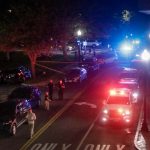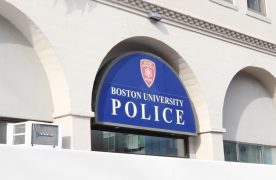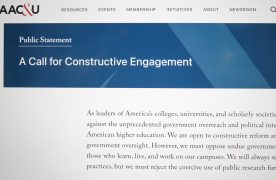The Fourth of July was more than just fireworks for Boston University’s Center for Space Physics (CSP) when NASA announced a $90 million endorsement to go toward CSP’s work in designing the agency’s next mission in the Small Explorer Program.
CSP, directed by BU professor of astronomy Supriya Chakrabarti, has been selected to be the “principle investigator” in the design and construction of a space probe known as SPIDR (Spectroscopy and Photometry of the Intergalactic Mediums’ Diffuse Radiation) that will attempt to map the cosmic web of hot gasses that permeates the universe.
According to Chakrabarti, the project is the largest project in the University’s history.
Chakrabarti saw the announcement of opportunity posted by NASA approximately two years ago.
“We wrote a proposal. We were one of 46 individual proposals submitted. [NASA] picked six,” said Chakrabarti.
NASA then gave the candidates $450,000 to come up with more detailed proposals and made site visits.
A team of approximately 18 experts came to Boston University and reviewed the facilities and Chakrabarti added, “they quizzed each of us.”
In addition, NASA scrutinized BU’s facilities because according to Chakrabarti, “besides providing leadership and management, we will build all the instruments.”
“It’s the taxpayer’s money…[NASA] wants to make sure you can deliver,” Chakrabarti said, referring to NASA’s extremely thorough investigation.
Draper Lab, a non-profit laboratory located in Cambridge, will build the spacecraft bus, which includes the solar arrays to power all the instruments and the radios that will receive commands from Earth.
Instruments will be designed specifically for this project and “individually soldered on-site” said Chakrabarti. SPIDR will be manufactured and assembled on the BU campus.
Chakrabarti also assembled a team of experts in various scientific areas from other universities because “$90 million is a major undertaking for any single university,” he said.
BU students will also be involved in the undertaking. In addition to approximately 15 to 20 professionals working on SPIDR, 20 to 30 students, both graduate and undergraduate will be involved over the life of the project.
“That alone just says, ‘if you want to be involved in a space research program, then BU is the place,'” Chakrabarti said.
He added, “I hope this shows BU is capable of competing with other research universities. It shows we have confidence in our ability.” He said he also believes that the SPIDR project lends credibility to the University and believes it will attract students.
When complete, the SPIDR will measure approximately one meter in diameter and two meters tall.
The question of why we should look at gasses is “one of the more profound questions we are trying to attack,” Chakrabarti said.
Current scientific theory supports the Big Bang Theory, which holds that the universe started 16 billion years ago when an infinitesimally small point with infinitely large mass, “violently expanded creating space, time and everything else,” said the CSP SPIDR homepage.
Much of the matter formed into star and galaxies but according to the website, much of this matter though to make up the universe is unobserved.
The SPIDR’s goal is to measure and track down the missing dark matter in the universe.
“If I can see them, and they are pervasive in the sky, it will have solved a big mystery. If we don’t see them, them it becomes a more important measurement. [It means there is] something wrong with our fundamental understanding of the universe,” said Chakrabarti.
“This is going to be great fun,” said Chakrabarti, “to build something to fly in space-I can’t think of anything more exciting.”
The Center for Space Physics was established 15 years ago. The CSP is also involved with a 10-year, $40 million grant funding the Center for Integrated Space Weather Modeling (CISM). CISM’s modeling effort aims to understand how changes in the sun affect Earth.
This is an account occasionally used by the Daily Free Press editors to post archived posts from previous iterations of the site or otherwise for special circumstance publications. See authorship info on the byline at the top of the page.












